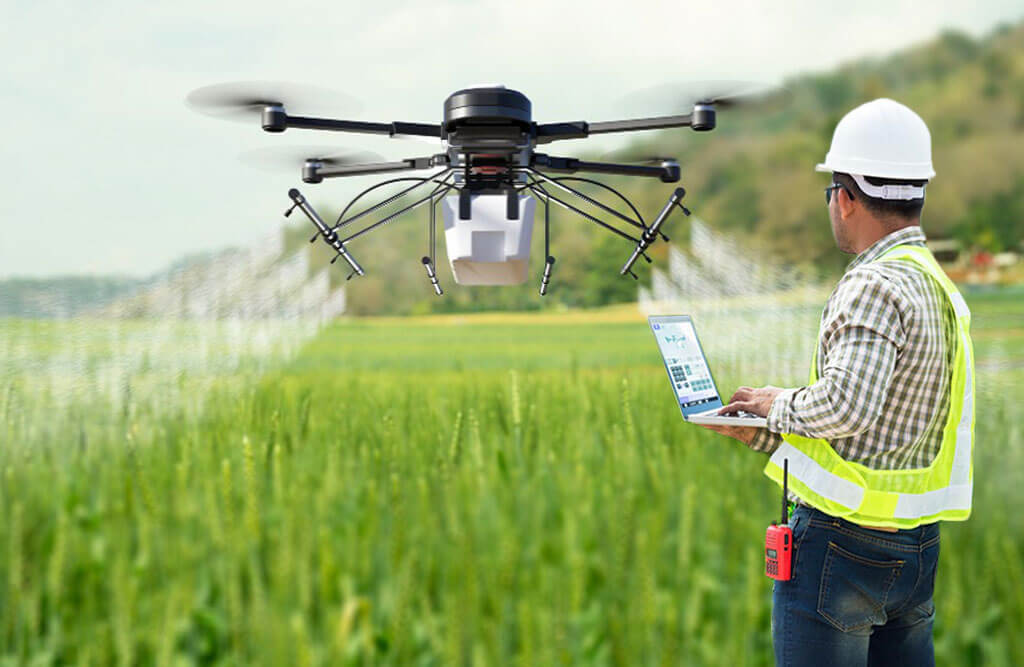
Plant protection activities are most important practices during crop production. The application of fungicides, herbicides, and insecticides is one of the most recurrent and significant tasks in agriculture. Conventional agricultural spraying techniques have made the inconsistency between economic growth and environmental protection in agricultural production. Spraying techniques continuously developed in recent decades. For pesticide application, it is not the only sprayer that is essential, but all the parameters like the type and area of the plant canopy, area of a plant leaf, height of the crop, and volume of plants related to plant protection product applications are very important for obtaining better results.
Crop sprayers : The use of herbicides and pesticides has made sure to improve the yields from crops until now have been an overdose of pesticides and herbicides causing herbicide-resistant weeds and a very big decrease in biodiversity. Orchard sprayers : For the orchards and vineyards, a powerful and effective plant-protection method is extensively adopted to attain higher quantity and quality of the production.
To enhance orchard sprayer performance a number of new mechanisms have been introduced such as, an automatic variable-rate (VAR), Electrostatic, air-jet, air assisted and air blast systems.
Ultra-low volume sprayers : Ultra-low volume (ULV) spraying is a common and advanced spraying method and considered a most effective and standard technique control of locust using chemicals and is also extensively used by farmers of cotton crops to control pest and insects.
Conventional tractor: Mounted boom sprayers apply spray on the upper side of the leaves, However, mostly the sucking insects (aphid, whitefly, jassid, thrips, etc.) have their shelter houses on the bottom side of leaves of the upper half section of the cotton plant which not only get shield from sprays but also attain the shadow of leaves shadow as of umbrella coverage.
Aerial spraying: Although the aerial spraying has been used since middle of 20th century however, the innovation of unmanned aerial vehicle is assumed as most of are one important development in the field of agricultural spraying and plant protection engineering because of its tremendous merits over the conventional ground sprayers.
Spray drift management : Spray drift is a physical moment of the droplet during the application of spraying liquid to the off target area under influence of climatic factors such as wind speed and temperature. Spray drift may occur to numerous forms as a droplet, dry particles, or vapor. Particle drift enhances when water and other pesticide carriers evaporate rapidly from the droplet, lifting tiny particles of concentrated pesticide.
This technology can help farmers understand how new spraying techniques can impact their productivity and costs.
It can inform agricultural organizations and government departments about how the latest spraying technologies can assist in the development of their respective sectors and improve agricultural systems.
It can aid agricultural scientists in the development of new technological advancements and support their research efforts.
This can be used to provide new information in the field of agricultural technology in educational institutions and agricultural training centers.
Conclusion: Plant protection practices are most important activities during crop production. Progress in spraying technology has been increase in recent past. Robotics and automatic spraying technologies like variable rate sprayers, UAV sprayers, and electrostatic sprayers has gained more attention to enhance. These advanced spraying technologies not only reduces the labor cost but also effective in environmental protection. Researchers are conducting experimental studies on the design, development and testing of precision spraying technologies for crops and orchards.
Read More…
Don Brightcrops 20 Years of Agricultural Prosperity Healthier Soil Good Crops